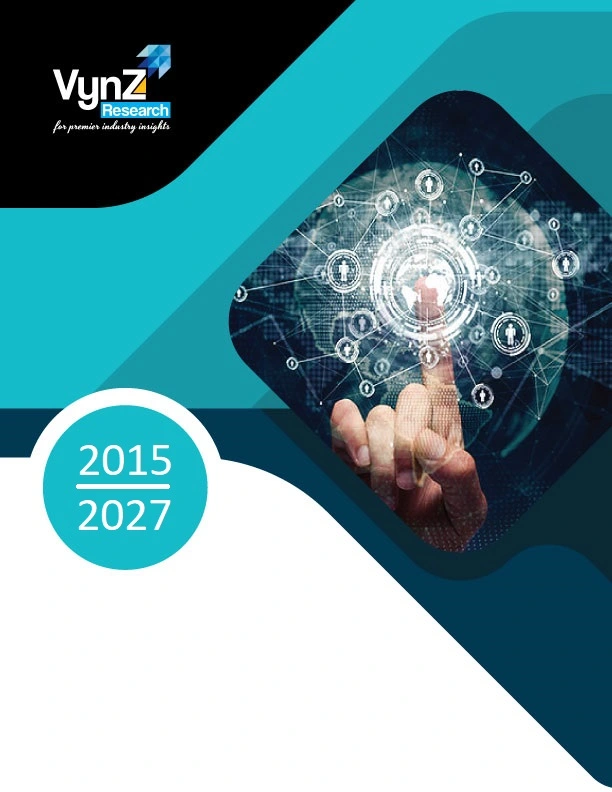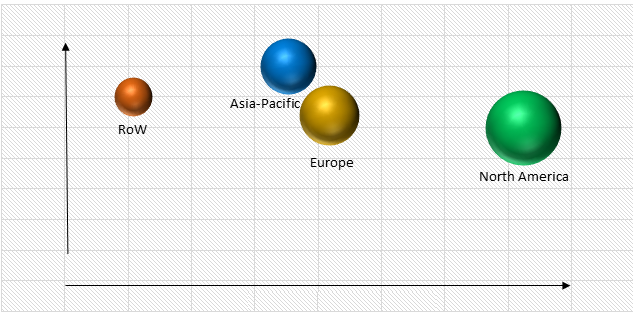| Status : Published | Published On : Jan, 2024 | Report Code : VRICT5001 | Industry : ICT & Media | Available Format :

|
Page : 129 |

Global Gamification Market – Analysis and Forecast (2025 – 2030)
Industry Insights by Solution (Consumer-Driven Solution and Enterprise-Driven Solution), by Deployment Type (Cloud-Based and On-Premise Based), by User Type (Small and Medium Enterprises and Large Enterprises), by Application (Sales, Marketing, Product Development, Support, Human Resources and Others), by Industry (Media and Publishing, E-Commerce, Retail and Consumer Goods, Banking, Financial Services, and Insurance, Travel and Logistics, Entertainment, Education, Healthcare and Others) and by Geography (North America, Europe, Asia-Pacific, Middle East, and Rest of the World)
Industry Overview
The global Gamification Market was valued at USD 5.3 billion in 2023 and is further anticipated to witness a CAGR of 32.7% during the forecast period (2025 – 2030). Gamification technique is used by individuals for assimilating persistent game design for everyday operation basis in order to encourage and involve people in order to attain their objectives in an effective manner. The gamification market is expected to continue growing as organizations recognize the potential benefits of leveraging game mechanics and techniques to drive user engagement, behavior change, and learning outcomes. The market is also likely to evolve with the advancements in technology, such as virtual reality (VR) and augmented reality (AR), which can further enhance gamified experiences.

The growth of the market is anticipated to be high due to the increased capability of this technique to satisfy the needs and desires of an individual pertaining to their virtual achievement and position. It has been observed that the accomplishments in this technique are measured through scores, points, and level crossing, Moreover, the ability to upgrade the overall experience of the users is another factor pertaining towards the growth of gamification market across the globe.
Gamification Market Segmentation
Insight by Solution
On the basis of the solution, the gamification market is segmented into a consumer-driven solution and enterprise-driven solution. Among these two segments, the consumer-driven solutions contribute larger revenue to the global market and are predicted to witness a CAGR of 25.7% during the forecast period. This segment is contributing the largest revenue since consumer-driven solutions are considered to be user-friendly and flexible and are extensively being utilized for amplifying loyalty and motivation of customers towards various products across several different industries.
Insight by Deployment Type
On the basis of deployment type, the gamification market is segmented into cloud and on-premise based deployment type. The extensive utilization of Internet-based services along with rapid technological advancements is enhancing the growth of cloud-based deployment. The cloud-based solutions are expected to witness faster growth of 35.1% CAGR during the forecast period due to rapid implementation of cloud by small and medium enterprises across the world in order to smoothly administer gamification techniques and at
Insight by User Type
On the basis of user type, the gamification market is segmented into small and medium enterprises and large enterprises. Among these two segments, a small and medium enterprise is expected to witness faster growth of 35.4% during the forecast period. Gamification techniques are enabling small and medium enterprises to reevaluate the method that leads to producing results with the help of processes, people and technology.
Insight by Application
On the basis of application, the gamification market is segmented into sales, marketing, product development, support, human resources, and others. Among all these applications, marketing has been contributing the largest revenue to the global market. The segment is further expected to witness a CAGR of 28.4% during the forecast period. The growth of this segment is attributed towards increasing marketing events with the use of levels, virtual goods, credits, leaderboards, and points.
Insight by Industry
On the basis of industry, the global gamification market is segmented into media and entertainment, e-commerce, retail and consumer goods, banking, financial services, and insurance, travel, and logistics, entertainment, education, healthcare, and others. Among all these segments, the education sector is predicted to witness the fastest market growth during the forecast period.
Global Gamification Market Report Coverage
|
Report Metric |
Details |
|
Historical Period |
2018 - 2023 |
|
Base Year Considered |
2024 |
|
Forecast Period |
2025 - 2030 |
|
Market Size in 2024 |
U.S.D. 5.3 Billion |
|
Revenue Forecast in 2030 |
U.S.D. XX Billion |
|
Growth Rate |
32.7% |
|
Segments Covered in the Report |
By Solution, By Deployment Type, By User Type, By Application, and By Industry |
|
Report Scope |
Market Trends, Drivers, and Restraints; Revenue Estimation and Forecast; Segmentation Analysis; Impact of COVID-19; Companies’ Strategic Developments; Market Share Analysis of Key Players; Company Profiling |
|
Regions Covered in the Report |
North America, Europe, Asia-Pacific, Middle East, and Rest of the World |
Industry Dynamics
Trends
Increasing demand for gamification technique in the learning process as compared to that witnessed by the conventional methods of learning is expanding at an escalating rate. It has been observed that in the present scenario there are several learners in various business organizations and enterprises that feel motivated by getting enlightened through rewards and points. Moreover, an extensive explosion of social media platforms, an increasing number of millennials in the workplace and expansive utilization of mobile technology are the key trends witnessed in the gamification industry, globally.
Gamification platforms and software: Companies develop and provide gamification platforms and software solutions that enable organizations to design, implement, and manage gamified experiences. These platforms often include features such as points, badges, leaderboards, challenges, and rewards.
Serious games: Serious games are designed to educate, train, or inform users while incorporating game elements. These games can be used for employee training, simulations, healthcare interventions, and other purposes.
Mobile apps and gamified applications: With the widespread adoption of smartphones, many organizations are developing mobile applications that incorporate gamification elements to engage users and enhance their experiences. These apps can be found in various industries, including fitness, finance, language learning, and more.
Education and e-learning: Gamification is increasingly being used in educational settings and e-learning platforms to make learning more engaging, interactive, and enjoyable. It helps motivate students, track progress, and provide personalized learning experiences.
Marketing and customer engagement: Gamification is employed in marketing strategies to engage customers, increase brand loyalty, and drive desired behaviors. This can involve interactive games, challenges, loyalty programs, and other gamified experiences.
Gamification Market Growth Drivers
Extensive acceptance of technologies such as mobile, web and social media along with swelling utilization of Internet-based services is driving the growth of gamification market. Moreover, the presence of gamification systems such as consumer-based gamification systems and cloud-based gamification helps small and medium business enterprises to expansively accept techniques of gamification without paying any additional amount. The swelling dissemination of devices with a display is another factor driving the growth of the gamification market. Additionally, it has been observed that the population in the Asia-Pacific has a high demand for digital entertainment and increasing demand for tablets; laptops and mobile phones are the key contributors supporting this demand
The massive explosion of social sites is due to an entrenchment of reward and position components that are explicitly and implicitly used for people’s engagement with online groups, thereby fueling the growth of the gamification market. Moreover, the rapid demand for gamification applications and solutions in business organizations and consumer brands is further driving the growth of the global market.
Gamification Market Challenges
The absence of improvement in the designs of the game in various developed as well as developing economies is expected to hamper the growth of the gamification market. However, less awareness and low accessibility about gamification technique along with understated effects on the attitude of users is further hampering the growth of the market.
Recent Developments By the Key Players
Microsoft Corp. and Anduril Industries, a leader in defense technology, has expanded its partnership to drive the next phase of the U.S. Army’s Integrated Visual Augmentation System (IVAS) program. Through this partnership agreement, Anduril will assume oversight of production, future development of hardware and software, and delivery timelines. This agreement also establishes Microsoft Azure as Anduril’s preferred hyperscale cloud for all workloads related to IVAS and Anduril AI technologies.
Gamification Market Industry Ecosystem
Globally industry players are leveraging market growth through technological advancements, providing strategic assistance to the clients along with mergers and acquisitions in the gamification market, globally. Moreover, the key players are offering offers such as information management, data mining and revenue enhancement ideas and solutions.
Gamification Market Geographic Overview
Geographically, North America has accounted for the largest share of more than 45% in 2017 and is further anticipated to witness considerable growth during the forecast period. The growth of this market in the region is attributed to the extensive adoption of an enterprise-based and customer-based solution in this region. In order to aggravate the marketing activities of their organizations, countries such as the U.S. and Canada are rapidly adopting gamification technique with the use of effective branding, advertising, and customer interaction. These factors are thereby accentuating the demand for gamification market in this region.
Global Gamification Market, By Region

Moreover, Asia-Pacific is expected to witness the fastest growth in the gamification market due to increasing penetration of the internet in this region along with extensive demand for mobile devices. The growth of this market in the region is expected to at a CAGR of more than 40% during the forecast period.
Gamification Market Competitive Insight
- Bunchball Inc.
- Badgeville Inc.
- Kuato Studios
- MetricStream
- SAP SE
- Cisco Systems Inc.
- Gigya, Inc.
- Microsoft Corporation
- Knewton
- BigDoor Inc.
- Lithium Technologies Inc.
The Gamification Market report offers a comprehensive market segmentation analysis along with an estimation for the forecast period 2025–2030.
Segments Covered in the Report
- By Solution
- Consumer-Driven Solution
- Enterprise-Driven Solution
- By Deployment Type
- Cloud-Based
- On-Premise
- By User Type
- Small and Medium Enterprises
- Large Enterprises
- By Application Type
- Sales
- Marketing
- Product Development
- Support
- Human Resource
- Others
- By Industry
- Media and Publishing
- E-Commerce
- Retail and Consumer Goods
- Banking
- Financial Services and Insurance
- Travel and Logistics
- Entertainment
- Education
- Healthcare
- Others
Region Covered in the Report
- North America
- U.S.
- Canada
- Mexico
- Europe
- Germany
- U.K.
- France
- Italy
- Spain
- Russia
- Rest of Europe
- Asia-Pacific (APAC)
- China
- Japan
- India
- South Korea
- Rest of Asia-Pacific
- Rest of the World (RoW)
- Brazil
- Saudi Arabia
- South Africa
- U.A.E.
- Other Countries

Source: VynZ Research
Frequently Asked Questions
Purchase Options
Latest Report
Research Methodology
- Desk Research / Pilot Interviews
- Build Market Size Model
- Research and Analysis
- Final Deliverabvle
Connect With Our Sales Team
- Toll-Free: 1 888 253 3960
- Phone: +91 9960 288 381
- Email: enquiry@vynzresearch.com
Gamification Market
